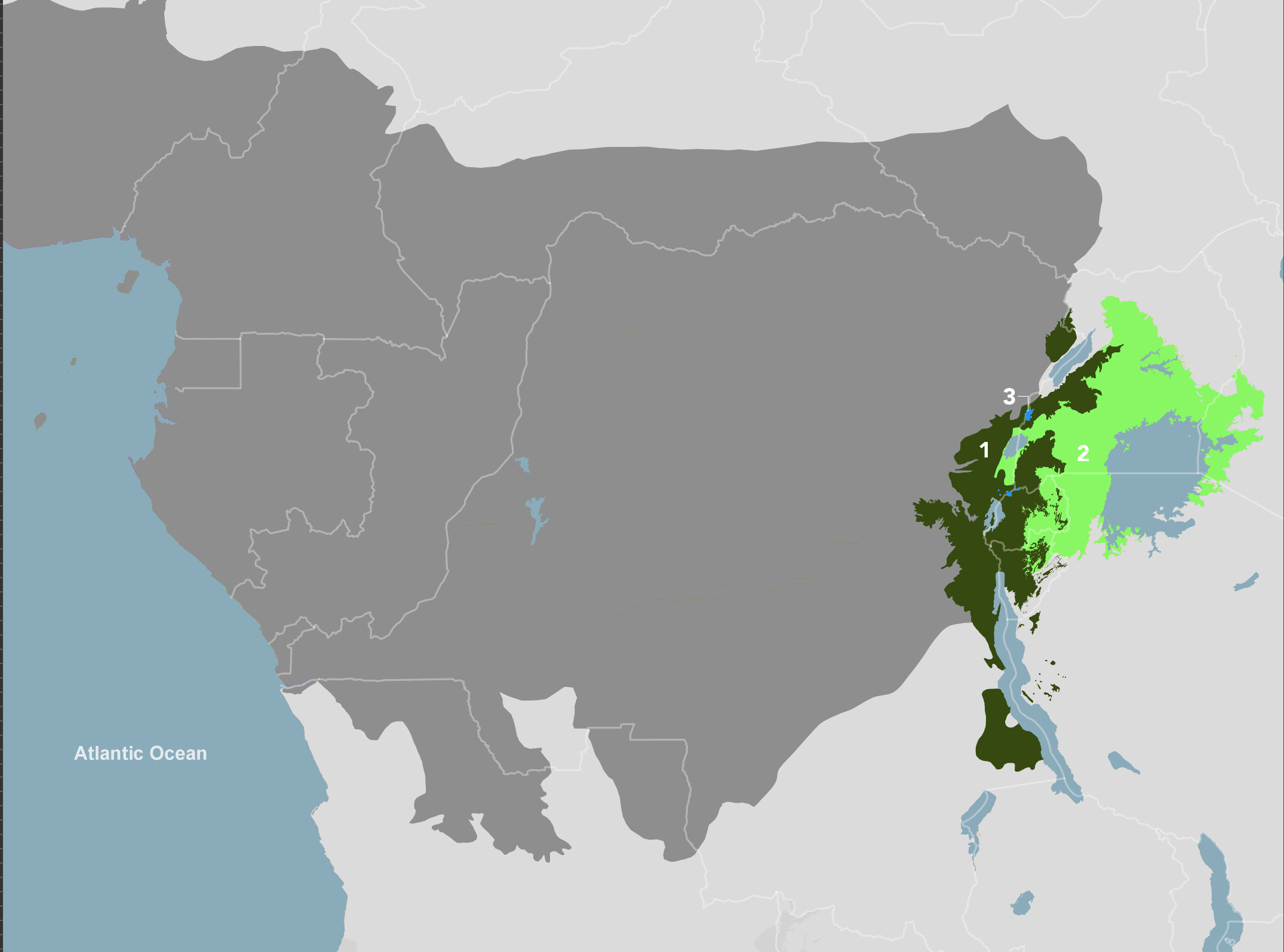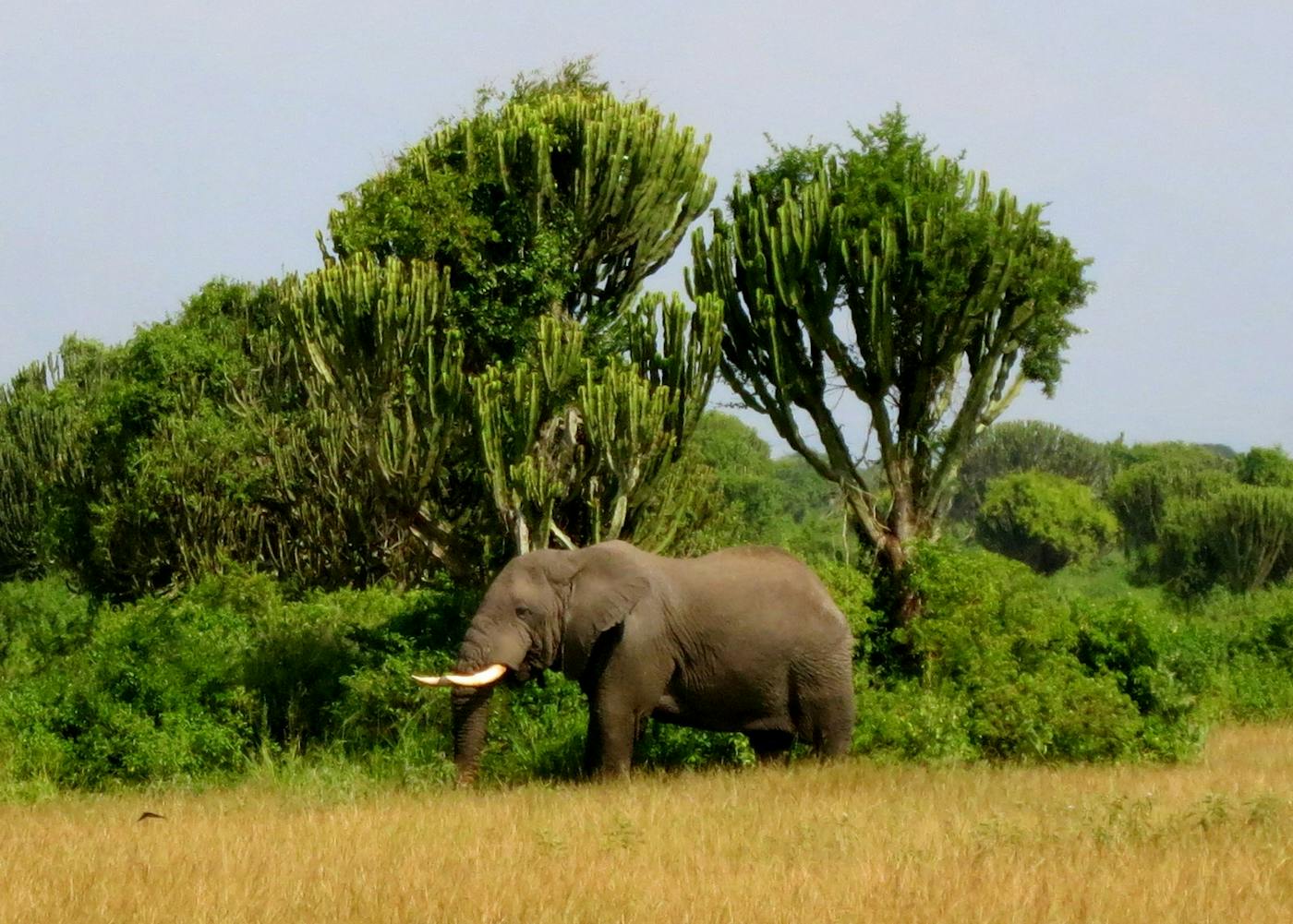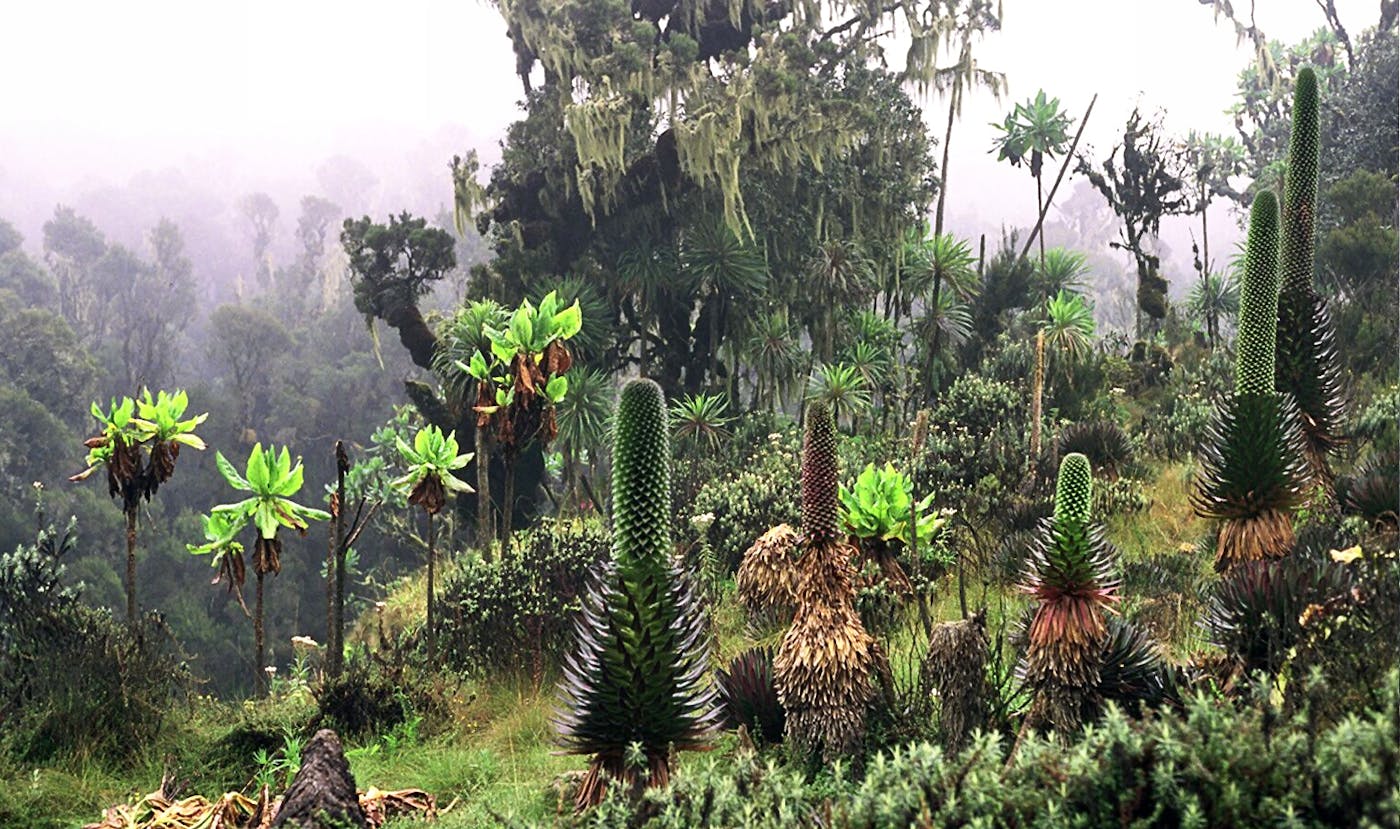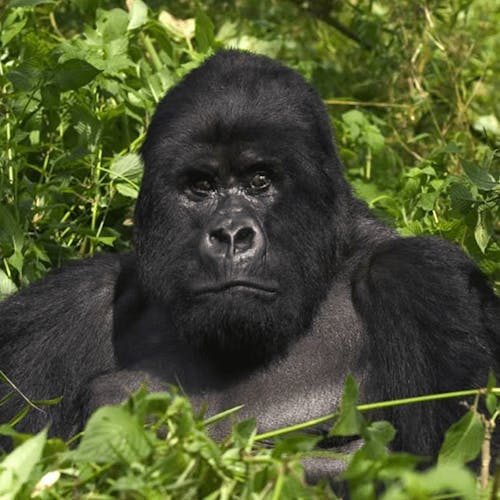Victoria Basin & Albertine Rift Forests bioregion
The bioregion’s land area is provided in units of 1,000 hectares. The protection goal is the combined Global Safety Net (GSN1) areas for the component ecoregions. The protection level indicates the percentage of the GSN goal that is currently protected on a scale of 0-10. N/A means data is not available at this time.
The Victoria Basin bioregion, located in the Equatorial Afrotropics subrealm, is centered on Lake Victoria at the border between Kenya, Tanzania, and Uganda, and the surrounding forest-savanna. It also includes the mountain forests along the Albertine Rift just to the west, which are tightly interconnected. The bioregion has three ecoregions—Albertine Rift Montane Forests (1), Victoria Basin Forest-Savanna (61), Rwenzori-Virunga Montane Moorlands (86)—and includes the famous Virunga National Park near Lake Edward at the eastern border of DRC. This is an especially important area of biodiversity with more than 2000 plant and tree species, 230 of which are endemic, and the last refuge of many endangered animals, including the mountain gorilla, golden monkey, blue monkey, olive baboon, bush elephants, and hippopotamus. It’s also a refuge for millions of birds, which winter here from as far as Siberia. The area of this bioregion is nearly 32 million hectares.

The Victoria Basin & Albertine Rift Forests bioregion is part of the Equatorial Afrotropics subrealm and is made up of three ecoregions: Albertine Rift Montane Forests [1], Victoria Basin Forest-Savanna [2], Rwenzori-Virunga Montane Moorlands [3].
Learn more about each of the Victoria Basin & Albertine Rift Forests ecoregions below.
Explore the Bioregions
Want to learn more about the fascinating species, diverse ecosystems, and natural wonders of the Earth? Click the button below to launch One Earth's interactive navigator and discover your Bioregion!
LAUNCH NAVIGATOR



